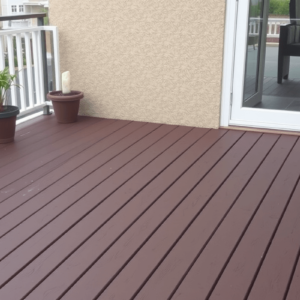Plans for Composite Decking
Introduction to Composite Decking
Composite decking has become increasingly popular as a durable and low-maintenance alternative to traditional wooden decks. This article will provide a comprehensive guide on planning and executing a composite decking project, covering key aspects such as material selection, structural considerations, installation techniques, and maintenance tips. Whether you’re a DIY enthusiast or planning to hire professionals, understanding these elements can help ensure the success of your project.
Material Selection: Choosing the Right Composite Decking
When selecting composite materials, it’s crucial to consider factors like durability, aesthetics, and cost. Composite decking is made from a blend of wood fibers and plastic, often recycled materials, which makes it resistant to rot, insects, and weathering. Brands like Trex, TimberTech, and Azek offer a variety of options with different warranties and aesthetic properties. For instance, some composites mimic the look of natural wood, while others have a more contemporary finish. Understanding the specific needs and preferences of your project will help you choose the most suitable product.
Structural Considerations: Laying the Foundation
Before installing composite decking, it’s essential to assess the structural integrity of the area where the deck will be built. This includes ensuring the ground is level and stable, and checking if any permits are required by local authorities. The design should account for weight-bearing capacity and incorporate proper spacing between joists to support the deck evenly. Additionally, using appropriate fasteners and connectors is vital for long-term stability and safety. Consulting with a structural engineer can provide valuable insights into designing a safe and compliant structure.
Installation Techniques: Getting It Right
The installation process involves several steps, starting with preparing the site and laying out the framework. Fastening methods vary but typically include hidden clips, screws, or nails designed specifically for composite materials. Proper alignment and spacing are critical during this phase to prevent warping or bowing over time. Tools needed include a circular saw, drill, and screwdriver. Following manufacturer guidelines closely ensures optimal results. For those less confident in their abilities, hiring experienced contractors can significantly reduce the risk of errors and improve overall quality.
Maintenance Tips: Keeping Your Deck Looking New
Despite being more durable than wood, composite decks still require regular upkeep to maintain their appearance and functionality. Cleaning with mild detergent solutions and occasional power washing (using lower pressure settings) helps remove dirt and stains. Avoid abrasive cleaners or tools that could damage the surface. Applying sealants or finishes may enhance longevity, although many modern composites are treated to resist fading and staining without additional treatments. Regular inspections for loose components or signs of wear can also help identify issues early on.
Conclusion: Embarking on Your Composite Decking Journey
Planning and executing a composite decking project requires careful consideration of multiple factors, from initial material selection to ongoing maintenance. By following best practices and leveraging expert advice when necessary, you can create an attractive, functional outdoor space that enhances your home’s value and enjoyment for years to come. Remember, investing time upfront in thorough preparation and choosing high-quality materials pays off in the long run.





Reviews
There are no reviews yet.